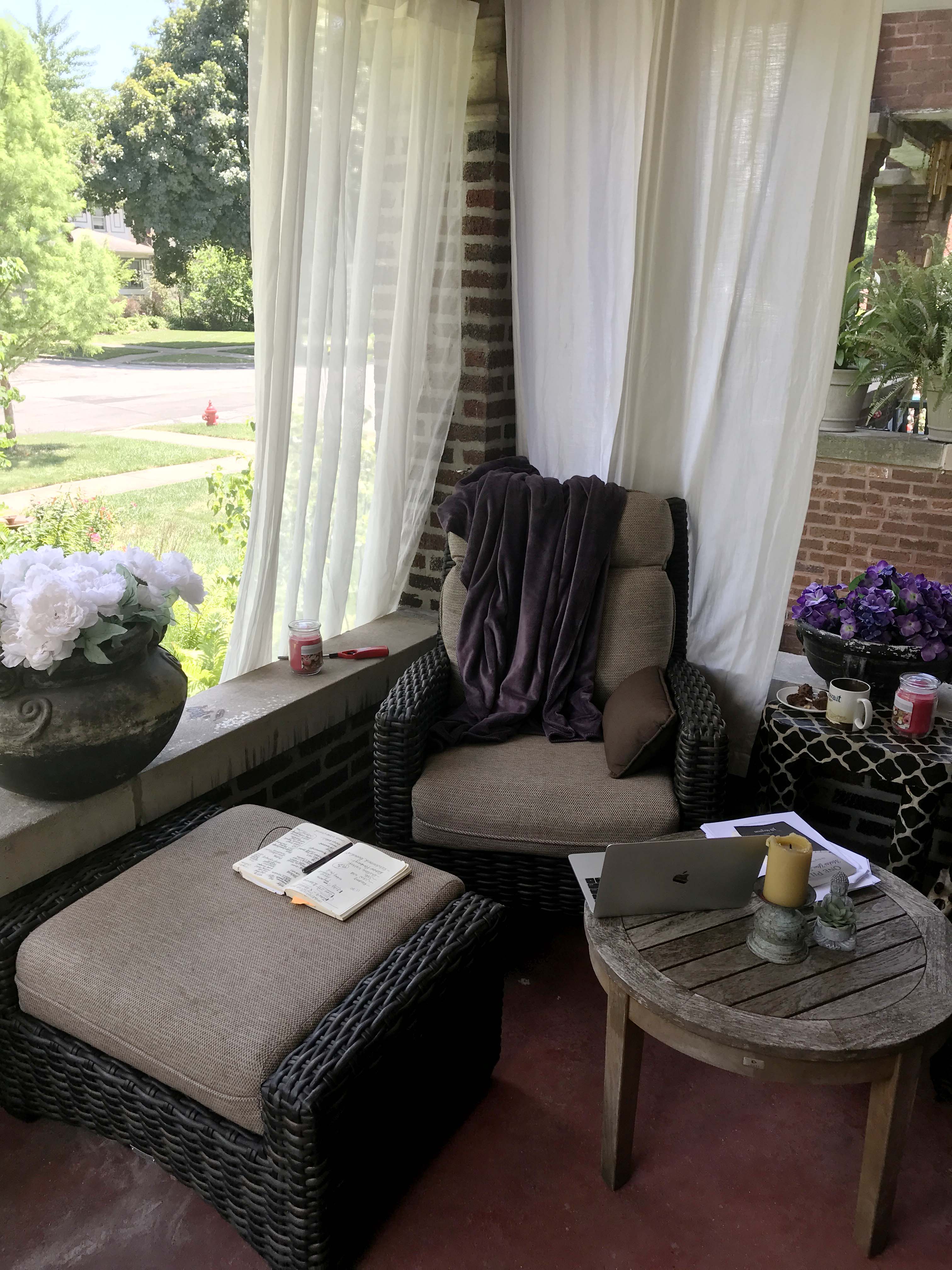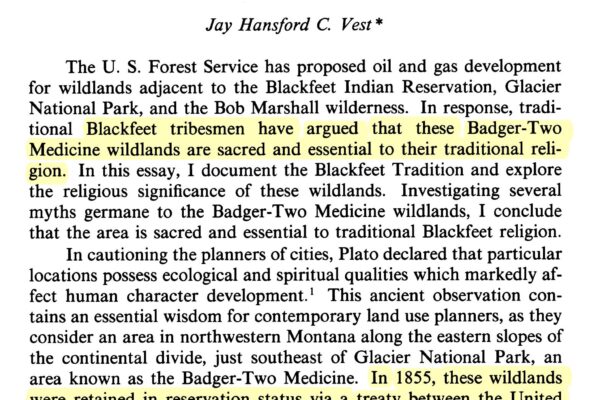“Is anyone else having trouble focusing?” I’ve talked with a few people these past weeks and months who’ve had difficulty with their writing. “I sat in front of my computer for three hours and only wrote one sentence,” someone noted on an online writing forum I follow. “Same,” another chimed in.
I’ve been stymied by an article on wilderness and literature that I signed a contract to write over a year ago with a deadline of May 30, 2020. But anything, everything, seems more important than writing. A fly landing on the curtain rod. The hum of the air conditioner. The dishes stacked in the sink. That old trunk I’ve been meaning to clean out for the last ten years. The easy chair on my front porch. Maybe I’ll sit there and read for a while. I plop down and my eyes close instantly.

My front porch writing space in Oak Park, IL
As the days pass, the article recedes into the nowhere of pandemic worry. I swallow my shame and loathing and write repeated messages to the editors—people I admire—requesting extensions. More than once I’ve struggled with dark moods that left me disoriented and paralyzed. When that happened before, I broke my work down into small segments, baby steps.
Which is how I’m finally able to get through this task. My process:
Mapping
I first did a long free write without looking at notes or books. It helped me take stock of what I know and don’t know, helped me find a voice. Then I mapped it out.
Gathering
Everything in one folder, previous writing and notes along with articles I’ve annotated.
Outlining
I approach outlining like it’s a piece of art. I don’t outline everything I write, but when I do, I use OmniOutliner, which lets me move things around easily. With this piece of the outline, I didn’t care too much about the hierarchy. I was mostly interested in grouping ideas and quotations.
Editing
In between many naps and online shopping for things I don’t need like moss from Etsy and coyote urine to keep the squirrels away from my plants. This kind of radical editing takes a week or more. I also cleaned up the footnotes.
Reading
I read aloud several times to make sure the rhythms are just right. I also find a lot of repetition I can excise.
When I’m finished, what I realize is this: I love the discoveries, both intellectual and personal, I’ve made in the struggling and the writing.
What small, incremental steps are you taking to keep moving forward in your writing and work?
[br] [br] [br]










